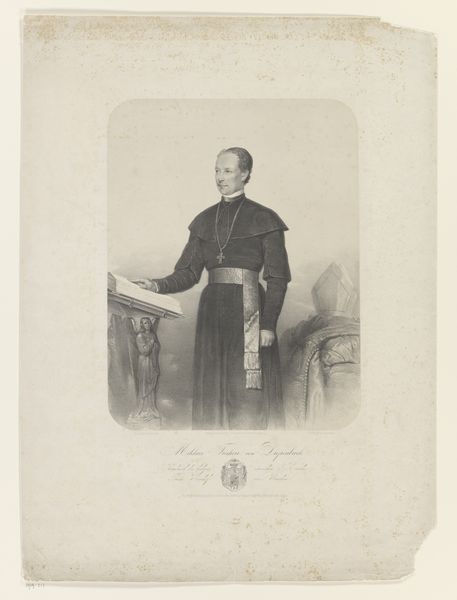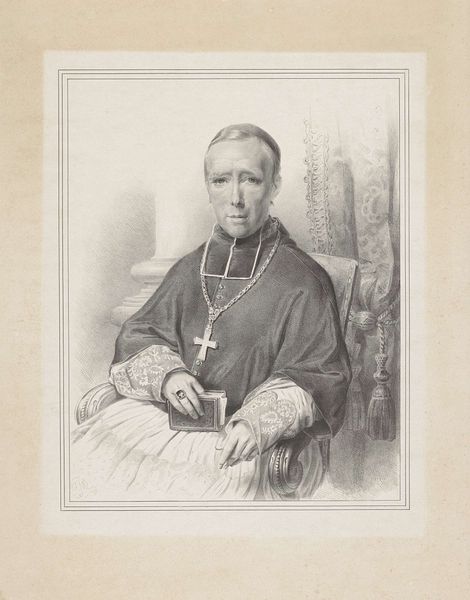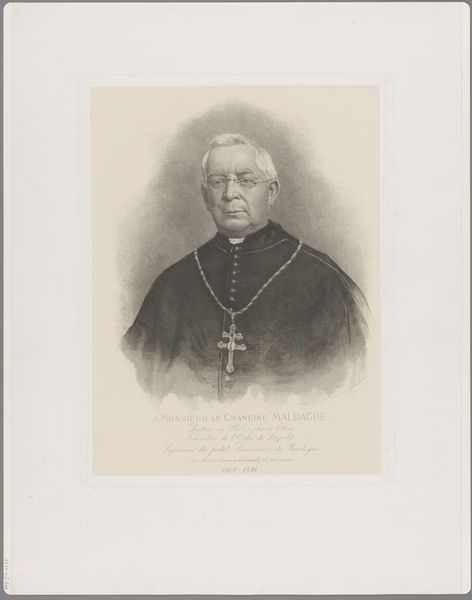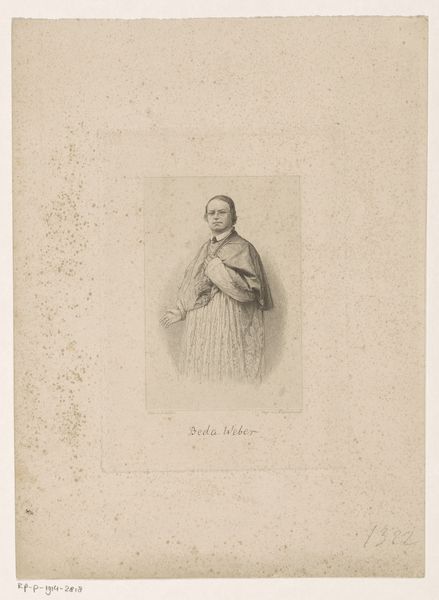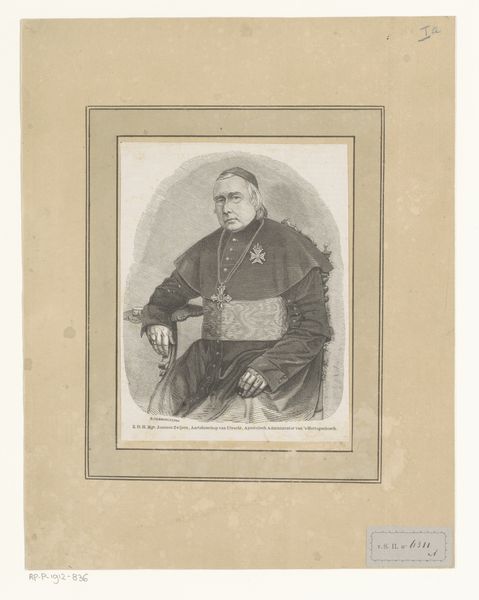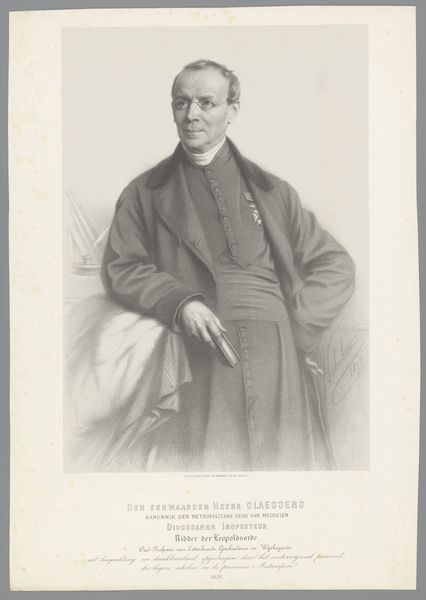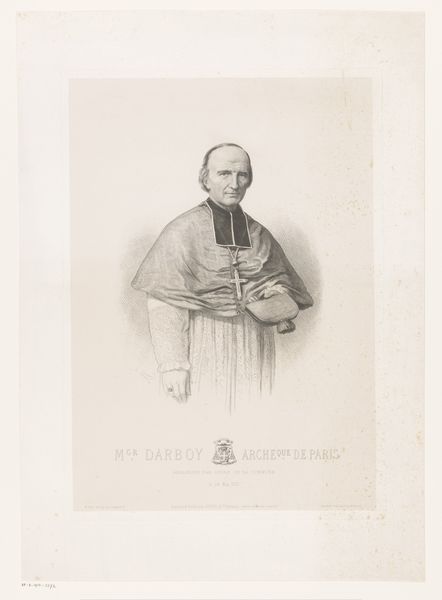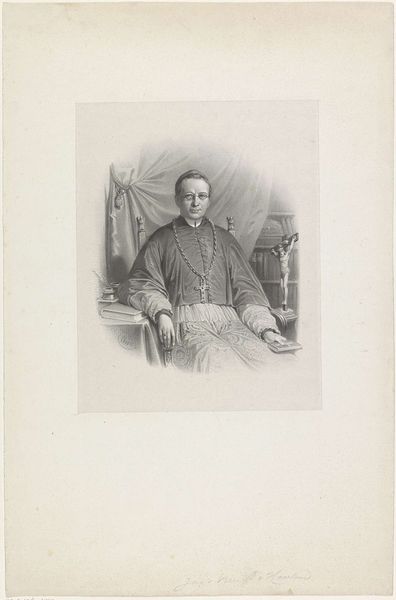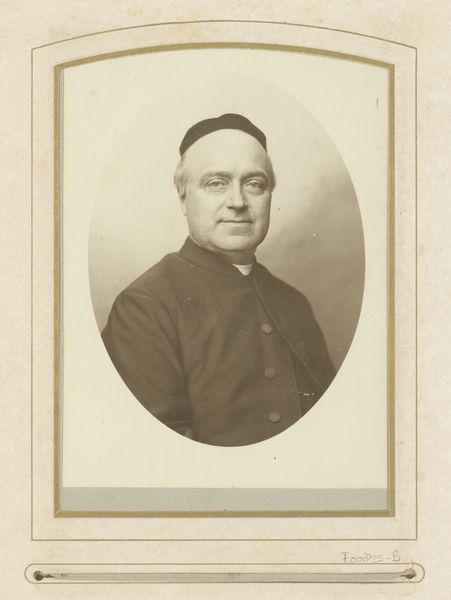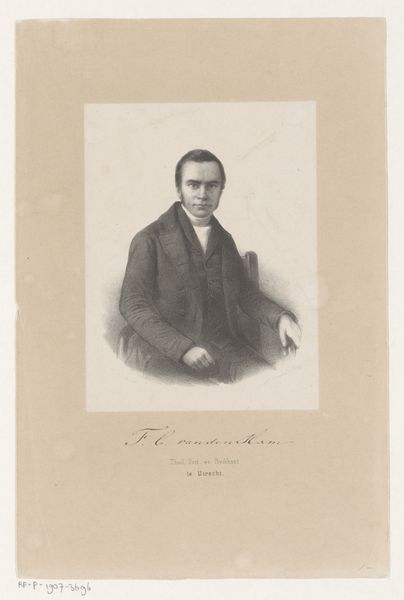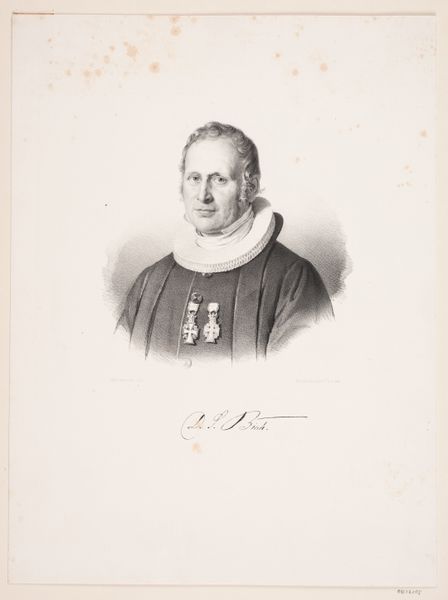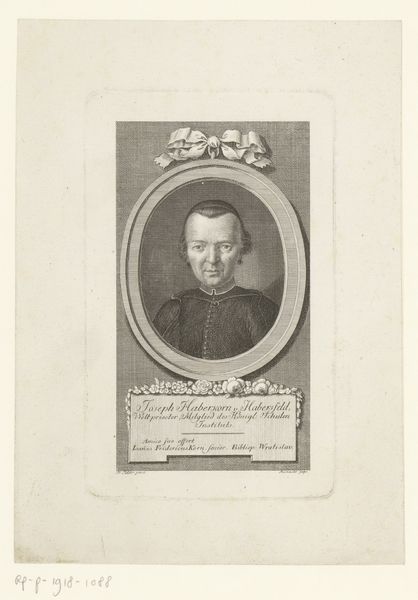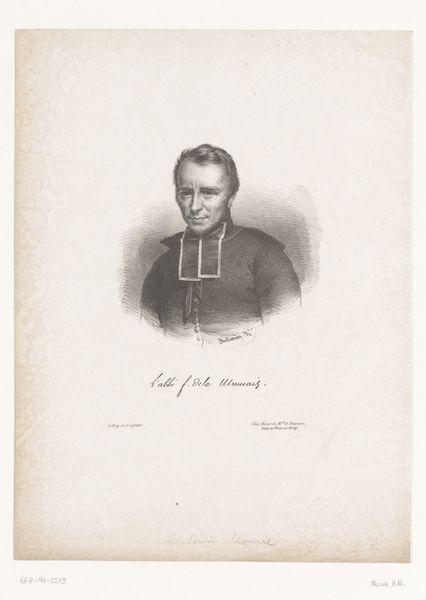
print, engraving
#
portrait
#
pencil drawn
#
light pencil work
# print
#
pencil sketch
#
pencil drawing
#
pencil work
#
history-painting
#
engraving
#
realism
Dimensions: height 457 mm, width 307 mm
Copyright: Rijks Museum: Open Domain
Curator: This is a print rendering a portrait of Franciscus Jacobus van Vree, Bishop of Haarlem. The original work was created sometime between 1826 and 1863 by Albertus Anthonius Nunnink and it resides here at the Rijksmuseum. Editor: It's really the subtlety of the piece that grabs me—just shades of gray defining presence. The textures almost seem to float, lace melding with the subtle gradients of his garments. Does that speak to the Bishop's character, do you think? Curator: It speaks more to the stylistic conventions of portraiture at the time, perhaps. This piece exists within a very specific social context; as a Bishop, van Vree was not just an individual, but a symbol of the Catholic Church in the Netherlands. The print would have circulated amongst his followers to inspire devotion and reinforce his authority. Editor: Ah, the good old days of iconic authority. You're right, it has that quality, and yet... look at the face. There's a vulnerability there. The artist has captured a humanity that exists underneath the vestments and regalia. Curator: Interesting observation, though I'd counter that it might not have been intentional. Nunnink's success probably hinged on his ability to present his subject in a light befitting their status. Personal vulnerabilities would need to be overcome for a presentation of strength. Editor: So art becoming a tool? I can appreciate that side, the practical art fulfilling the commission... still, though, the beauty arises in this case precisely in that meeting between intent and the intangible aspects which betray humanity—a dialogue. Curator: Indeed, even within the confines of such strict social expectations, the hand of the artist—consciously or not—creates more than just a simple representation of power. It is that negotiation of power that speaks across history. Editor: Which is why, ultimately, art keeps us company. And perhaps the Bishop more humbly. It's always a collaboration between subject and interpreter—a chance for something quietly revelatory. Thanks for sharing this nuanced perspective. Curator: A fruitful conversation.
Comments
No comments
Be the first to comment and join the conversation on the ultimate creative platform.
